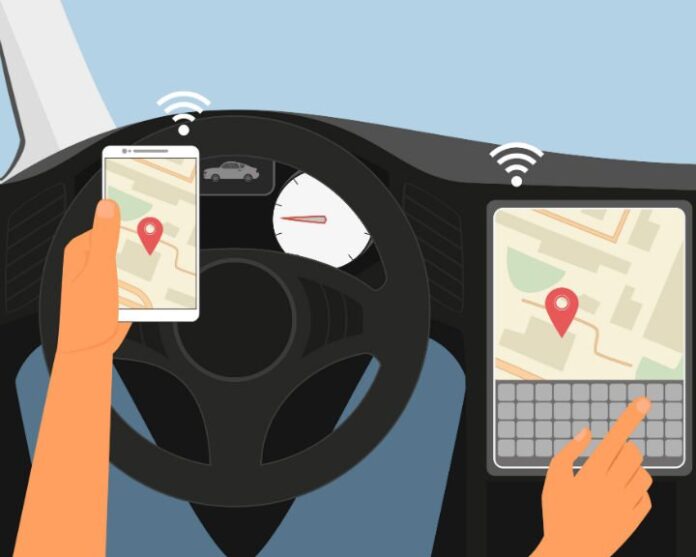Editor’s Note: With 2015 now upon us, RCR Wireless News has gathered predictions from leading industry analysts and executives on what they expect to see in the new year.
Who’s the biggest user of LTE technology in the world? Globe-trotting business executives? Think again. The automotive industry, with its growing base of “connected cars,” utilizes the most LTE connectivity, and that figure will continue to grow as more and more connected vehicles hit the road.
During 2014, every major vehicle manufacturer put a stake in the ground, laying out their connected-vehicle strategy. In 2015, the majority of cars that hit dealers’ lots will have at least the basic features of a connected car. According to new research from McKinsey, 80% of car buyers in America consider connectivity “important” or “very important” when making their vehicle buying decisions.
However, the strategies of vehicle manufacturers differ in the complexity – and cost – of the services they offer. At its most basic, a connected car is a vehicle that is equipped with Internet access, and usually also with a wireless local area network. From there on, offerings run the gamut, from basic emergency response systems to full-blown infotainment systems.
Table stakes
What’s really surprising to many is the pace at which this is happening. In reality, we’ve almost skipped a big segment of the technology-adoption curve, moving from innovators to early adopters to mass market incredibly quickly. Yes, the promise of “Knight Rider”-type cars has been out there for a few decades, but no one predicted connected car capabilities would consume even lower-end vehicle manufacturers quite as quickly as they have.
To go one step further, connected car capabilities will become a baseline offering in the market, as the McKinsey study illustrates. In 2015, car owners will make buying decisions based on a vehicle’s connectivity options, making connectivity a table stakes feature, just like seat belts and windshield wipers.
Some of the most popular features for connected vehicles will include:
• Safety features. We’ll see basic features such as crash notifications, Internet-enabled navigation, hands-free calling and safety alerts in virtually every new car that comes off the assembly line in 2015.
• Hot spot functionality. Every vehicle can be a virtual wireless hot spot. Everyone understands the importance of this: Traveling salespeople can download and send files to customers without utilizing their cellphones or finding the local Starbucks; moms can craft and send “e-vites” while waiting in carpool lines; students can complete and submit their homework while on their way to school – all using hot spot capabilities. While many of these capabilities can occur using a mobile device, the renewed focus in safety has caused many countries to ban handset use for drivers.
• Entertainment. Popular applications include streaming audio and multimedia downloads. Services like these will run the gamut as well, from basic offerings to services like those from Audi, which include voice-enabled controls, step-by-step navigation, real-time news and information, music and video streaming, Wi-Fi hot spots and more.
• Digital diagnostics. Entertainment has the cool factor, but vehicle maintenance capabilities can help save drivers money by detecting problems early. Automakers are starting to use sensors to go beyond scheduled maintenance alerts, overheating systems and tire pressure gauges. What’s different? They’re putting more and more information into the hands of the driver, not just telling them that a service is needed but things like brake condition, fluid levels and more. The dashboard warning light was a great addition to vehicles 30 years ago, but more recent capabilities have been equally generic, requiring a trip to the dealer to decrypt.
We’ll also see a surge in apps – ranging from weather alerts to mapping and traffic apps – as the demand from consumers grows.
The rise of LTE
In 2015 we will also see increased demand for LTE connectivity as connected vehicles increasingly utilize these high-bandwidth networks. While in other industries 2G modules will remain steady for basic applications, the high-speed capabilities of 4G are a requirement for the connected car, so it’s no surprise that auto manufacturers included that in strategy and specifications for 2015.
The loser is 3G. In 2015, expect to see 3G fade as customers with high-bandwidth requirements focus on 4G. This brings about another need in the automotive industry as well – the need for removable modules that allow systems to remain current with technology and be upgraded easily during a typical service visit. In 2014 this discussion started to gain traction. If the timeline for “5G” accelerates, the industry will be ready. Connected technologies will turn over much faster than cars, and the only way to future-proof against this is through the removable module.
2015: a watershed year
While 2014 was a huge growth year for every industry touching the connected car, 2015 will see more, more, more as automakers make significant investments in connected car programs. That’s great news for service providers, some of which are seeing as much as 90% of their machine-to-machine revenue generated from the connected car segment, according to Infonetics Research. And it’s great for consumers, who benefit from new safety, diagnostic, entertainment and connectivity capabilities. All in all, 2015 is shaping up to be a watershed year for the connected car.
John Horn is the EVP and chief strategy officer of KORE Wireless Group, which acquired RacoWireless in November 2014. Horn joined RacoWireless as president in May 2011, after serving as a leader at T-Mobile US for more than nine years. Since joining RacoWireless, Horn has led the company to record growth and achievement of multiple awards for accomplishments in M2M. At T-Mobile US, Horn developed and managed indirect distribution for the California launch – the largest launch in wireless history – and also launched the M2M channel. During his last six years at T-Mobile US, he focused specifically on developing T-Mobile US’ M2M program and go-to market strategy. He also helped T-Mobile US earn recognition as the market leader for M2M services. RacoWireless was a T-Mobile US partner for 10 years before the restructure. In 2007 and 2008, he was named an M2M Pioneer. Prior to T-Mobile US, Horn has served as a manager, director and VP of other telecom companies for more than 25 years. Horn earned a degree in political science from the University of California at Davis.


